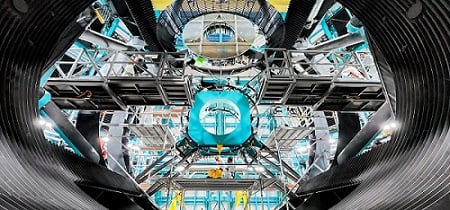
Installation Wraps on Corning and L3Harris' Jointly-Devloped Rubin Observatory Mirror
CORNING, N.Y., Aug. 15, 2024 — Corning Inc. and L3Harris Technologies have installed a jointly produced 11-ft-wide, 1500-lb glass mirror onto the Vera C. Rubin Observatory in Chile. The mirror becomes the largest convex mirror currently in operation.
The Rubin Observatory is one step closer to capturing images of outer space that will allow scientists to identify 10 to 100 times more objects in the solar system, including harmful asteroids. It will also provide scientists with data that could answer some of the most pressing questions about the universe.

The Vera C. Rubin Observatory in Chile is on track to be the largest ground-based observatory of its kind. The telescope is expected to begin operations next year. Courtesy of Corning Inc.
The mirror is made of Corning’s Ultra-Low Expansion Glass, a titania-silicate glass material with near-zero expansion characteristics, a quality that is critical to ensuring the telescope keeps its focus. The company tapped into a century of experience in large-aperture telescope fabrication to create the complex, innovative technology.
Once crafted, L3Harris fine-ground, polished, and finished the mirror. L3Harris also designed and built the secondary-mirror assembly, which consists of a stiff-steel mounting plate, 72 axial and six tangent actuators, the mirror-cell electronics and sensors, a thermal control system, and the mirror-control system.
The observatory is expected to be fully operational in 2025.
/Buyers_Guide/Corning_Inc_Advanced_Optics/c25205
/Buyers_Guide/L3Harris_Technologies_Imaging_Systems/c23390